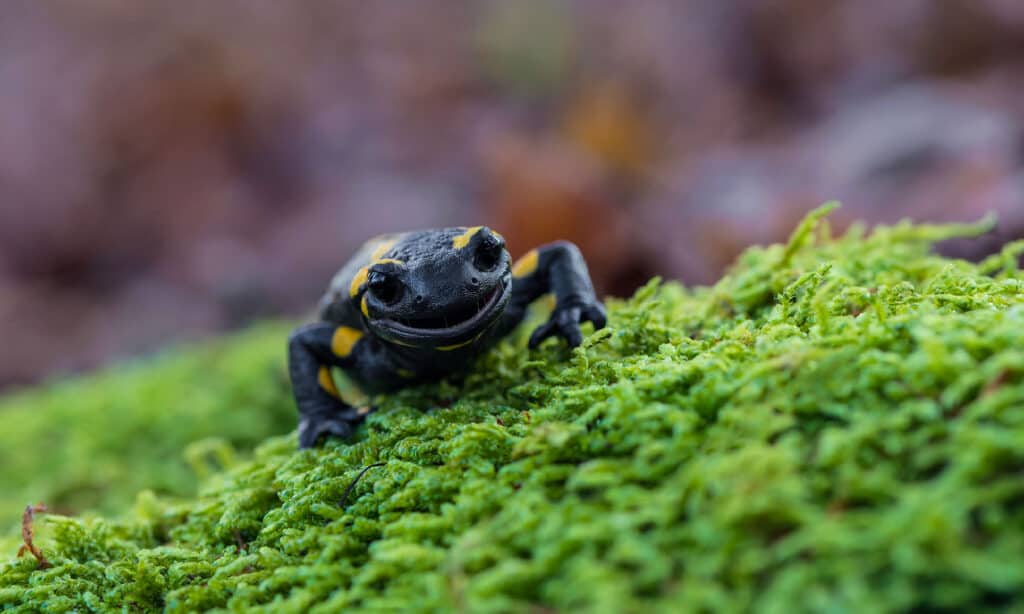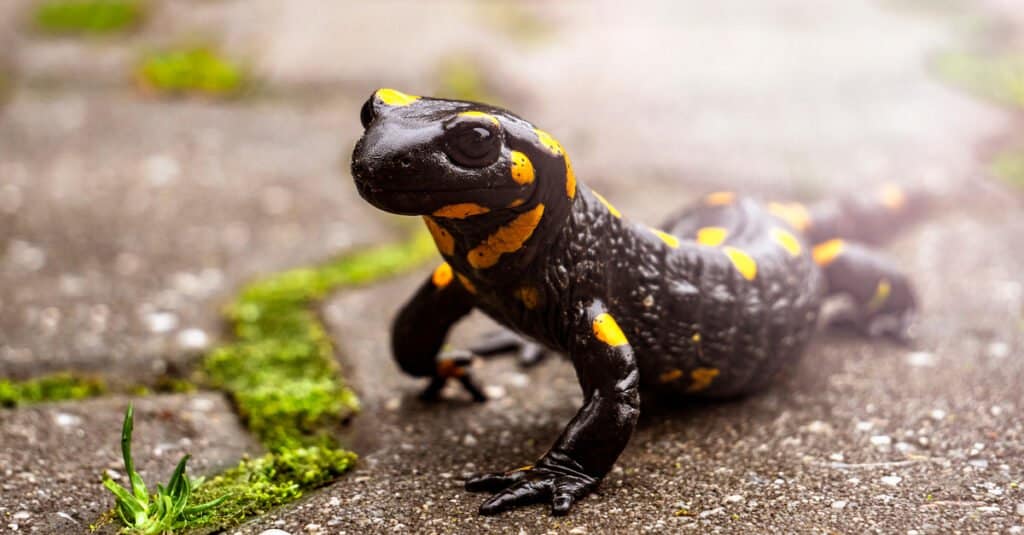Salamanders are a group of amphibians typically characterized by their lizard-like appearance, including slender bodies, blunt snouts, small limbs that protrude at right angles to the body, and the presence of a tail in both larvae and adults. One of the most fascinating things about this creature is how it looks.
These creatures resemble a hybrid of a frog and a lizard. They have long, smooth bodies, four short legs, and tails like a lizard’s while having a flat head that somewhat resembles a frog’s head. Although lizards and salamanders have some similarities, a salamander is an amphibian, whereas a lizard is a reptile.
In case you are wondering what these creatures eat, the answer depends on the species of salamander in question. Their diverse diets make it even more fascinating to think about what the insides of their mouths look like. Keep reading to know more about the teeth of salamanders and how they are used.
Do Newly Born Salamanders Have Teeth?

Salamanders are not born with teeth.
©Sheila Fitzgerald/Shutterstock.com
Newly born salamanders do not have teeth. Because they do not have teeth, they eat with their palate. When salamander eggs hatch, the babies go straight to foraging for their own food. Young salamanders frequently consume little cyclopsen or daphnia (microorganisms in pond water). They start eating bigger daphnia after a few weeks. These young salamanders also consume mosquito larvae or tubiflex worms a few weeks later, and begin eating similar foods to adult salamanders when they are around two months old.
Adult Salamander Teeth

Because salamander teeth lack specialization, they are generally homogeneous.
©iStock.com/Paolino Massimiliano Manuel
The upper and lower jaws of the majority of salamander species contain very tiny teeth. Although they are a species of climbing salamander, arboreal salamanders have very massive, well-developed, and razor-sharp teeth. The majority of salamanders have extremely small, scarcely perceptible teeth. Salamanders lack the specialized teeth that mammals have, such as canines for tearing apart food, incisors for biting, and molars for grinding. Because their teeth lack specialization, they are generally homogeneous.
How Do Salamanders Use Their Teeth?

Salamanders typically have five different tooth types.
©Smarteless/Shutterstock.com
To be clear, salamanders do not chew their food with their teeth in the same way that humans do. In contrast, they use their teeth to hold onto prey as they swallow it whole, very much like lizards do. Salamanders typically have five different tooth types: mandibular teeth, vomerine teeth, palatal teeth, and maxillary teeth.
Maxillary Teeth
The term “maxillary teeth” refers to the upper jaw’s teeth, which are similar to the teeth in the upper jaws of humans, except they do not work the same way. These uniformly sized teeth in salamanders have the appearance of little cones lining the upper jaw’s edge. The conical shape of the maxillary teeth prevents them from being able to chew or rip apart food. They merely assist in holding on to the prey as the salamander ingests it whole.
Premaxillary Teeth
Right in front of the maxillary teeth, on the very edge of the upper jaw, are the premaxillary teeth. They are hardly separated from the maxillary teeth in most salamander species, and it can often be challenging to tell them apart because they frequently resemble the maxillary teeth in shape and appearance.
Vomerine Teeth
The vomerine teeth, which are located in the facial bone known as the vomer, are often arranged in small clusters on the roof of the salamander’s mouth, directly behind the maxillary teeth. These teeth can’t be seen unless the salamander’s mouth is thoroughly examined since they are on the roof of the mouth. Even then, you probably won’t even notice them without a microscope because they are so small. However, they are a bit more visible in larger species.
Palatal Teeth
The roof of the salamander’s mouth also houses palatal teeth, which are similar to vomerine teeth. They are occasionally quite difficult to differentiate from the vomerine teeth because they are typically immediately adjacent to them.
Mandibular Teeth
The teeth on the lower jaw are referred to as mandibular teeth (the mandible). The sole difference between them and maxillary teeth is that they are located on the lower jaw as opposed to the upper jaw. Like the other teeth, they help the salamander hold onto its prey firmly as it is being swallowed whole.
Up Next:
Pet Salamander Guide: What You Need to Know
Are Salamanders Poisonous or Dangerous?
The photo featured at the top of this post is © Kurit afshen/Shutterstock.com
Sources
- ScienceDaily, Available here: https://www.sciencedaily.com/releases/2019/03/190322105716.htm
- Science Direct, Available here: https://www.sciencedirect.com/topics/agricultural-and-biological-sciences/giant-salamander
- Amphibian Life, Available here: https://www.amphibianlife.com/do-salamanders-bite/
Thank you for reading! Have some feedback for us? Contact the AZ Animals editorial team.






